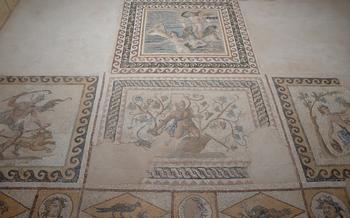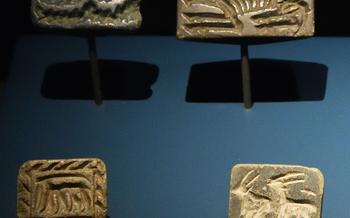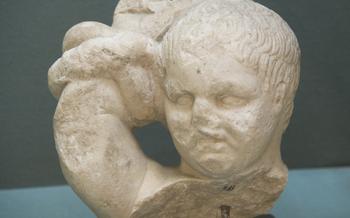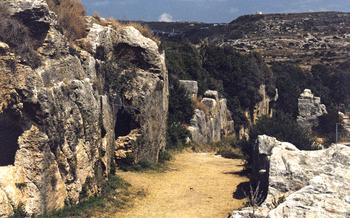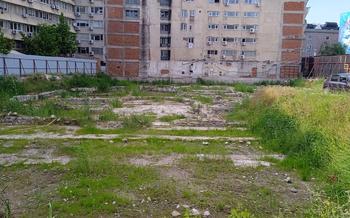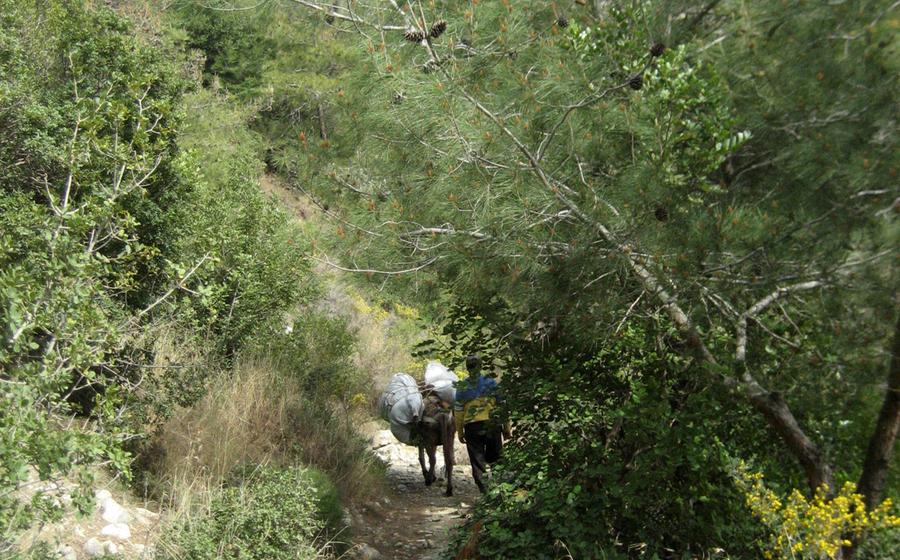
Savaş Artefacts Museum
- Unveiling Hatay's Rich History: A Journey Through Time
- Mosaic Masterpieces: Admiring the Skill and Precision
- A Glimpse into Ancient Civilizations: Hittites, Greeks, and Romans
- Exploring the Museum's Layout: A Thematic Journey
- Interactive Exhibits: Engaging with History
- A Walk Through the Ages: Chronological Display of Artifacts
- Guided Tours: Delving Deeper into the Past
- Educational Workshops: Hands-on Learning for All
- The Museum's Contribution to Archaeological Research
- Accessibility and Facilities: Ensuring a Comfortable Visit
- Local Cuisine and Delicacies: Savoring Hatay's Culinary Treasures
- Nearby Attractions: Exploring Hatay's Diverse Offerings
- Respecting the Museum's Guidelines: Ensuring Preservation
- Insider Tip: Unveiling Hidden Gems
Unveiling Hatay's Rich History: A Journey Through Time
Nestled in the heart of southern Turkey, the city of Hatay boasts a rich and diverse history that spans millennia. As a crossroads of ancient civilizations, Hatay has witnessed the rise and fall of empires, leaving behind a treasure trove of archaeological wonders. Among these, the Savaş Artefacts Museum stands as a testament to the region's storied past, inviting visitors to embark on a journey through time and uncover the secrets of ancient Hatay.
The Savaş Artefacts Museum is not just a repository of ancient artifacts; it is a gateway to the past, a place where visitors can immerse themselves in the cultural heritage of Hatay. Through its impressive collection of mosaics, sculptures, pottery, and other artifacts, the museum offers a comprehensive glimpse into the lives and achievements of the civilizations that once thrived in this region. It is a place where history comes alive, where visitors can witness the artistry, craftsmanship, and ingenuity of our ancestors.
The museum's unique collection plays a vital role in understanding the region's heritage. By preserving and showcasing these artifacts, the museum helps to shed light on the cultural influences that have shaped Hatay throughout the centuries. It is a place where visitors can learn about the region's ancient traditions, beliefs, and way of life, gaining a deeper appreciation for the rich tapestry of history that has woven together the fabric of modern-day Hatay.
Mosaic Masterpieces: Admiring the Skill and Precision
The Savaş Artefacts Museum houses an exceptional collection of mosaic art, showcasing the incredible skill and precision of ancient artisans. These intricate works, meticulously crafted using tiny pieces of colored stone, glass, or ceramic, adorn the floors and walls of the museum, transporting visitors back in time. The mosaics depict a variety of subjects, from mythological scenes and religious iconography to everyday life, offering a glimpse into the minds and beliefs of the people who created them.
The techniques used in creating these mosaics are as fascinating as the artworks themselves. The tesserae, or small pieces of material, are carefully arranged to form intricate patterns and figures. Some mosaics feature a combination of different materials, such as stone and glass, creating a rich and textured effect. The artists also employed various shading techniques to achieve a sense of depth and realism in their work.
The symbolism and stories depicted in the mosaics are equally captivating. Many of the scenes draw on Greek and Roman mythology, featuring gods and goddesses, heroes, and mythical creatures. Others depict historical events or religious narratives, providing valuable insights into the beliefs and practices of ancient civilizations. By studying these mosaics, visitors can gain a deeper understanding of the cultural and artistic heritage of Hatay.
A Glimpse into Ancient Civilizations: Hittites, Greeks, and Romans
The Savaş Artefacts Museum houses a diverse collection of artifacts from various eras, shedding light on the different cultures that have shaped Hatay's history. Among the notable highlights are Hittite sculptures, Greek pottery, and Roman coins. These artifacts provide a glimpse into the rich cultural heritage of the region and offer insights into the lives of its ancient inhabitants.
The Hittites, an Anatolian civilization that flourished during the Bronze Age, left behind a remarkable legacy of art and architecture. The museum showcases several impressive Hittite sculptures, including intricate carvings and reliefs that depict scenes from their mythology and daily life. These sculptures offer a tangible connection to this ancient civilization and provide insights into their beliefs and practices.
In contrast to the monumental Hittite sculptures, the museum also houses a collection of delicate and finely crafted Greek pottery. These vessels, often adorned with intricate designs and mythological scenes, showcase the artistic prowess of the ancient Greeks. The pottery provides glimpses into the everyday lives of the Greeks who inhabited this region, as well as their artistic traditions and cultural influences.
The Roman Empire, which ruled over Hatay for several centuries, left behind a rich legacy of coins, jewelry, and other artifacts. The museum's collection of Roman coins offers a fascinating glimpse into the economic and political systems of the Roman Empire. The coins feature portraits of emperors, depictions of gods and goddesses, and symbols of Roman power and authority.
These artifacts from various eras collectively provide a comprehensive overview of Hatay's rich cultural heritage. They offer visitors a chance to trace the region's history and gain insights into the lives and cultures of the civilizations that have shaped its unique identity.
Exploring the Museum's Layout: A Thematic Journey
The Savaş Artefacts Museum is meticulously organized into thematic sections, each dedicated to a specific era or culture that has left its mark on Hatay's rich history. As you navigate the museum's layout, you'll embark on a chronological journey, beginning with the Prehistoric period and culminating in the Islamic era.
In the Prehistoric section, you'll encounter an array of tools, weapons, and pottery that provide glimpses into the lives of Hatay's earliest inhabitants. The Classical section showcases exquisite Greek sculptures and pottery, while the Hellenistic section features intricate mosaics and artifacts that demonstrate the influence of Alexander the Great's empire.
The Roman section houses a collection of coins, jewelry, and everyday objects that offer insights into the daily life of the Roman citizens who once called Hatay home. In the Byzantine section, you'll find stunning mosaics and religious artifacts that reflect the region's Christian heritage. Finally, the Islamic section presents a range of ceramics, manuscripts, and metalwork that showcase the artistic and cultural achievements of the Islamic period.
By exploring each section of the museum, you'll gain a comprehensive understanding of the diverse cultures and civilizations that have shaped Hatay's unique identity. The thematic organization of the museum ensures a cohesive and immersive experience, allowing you to trace the region's cultural and artistic evolution seamlessly.
Interactive Exhibits: Engaging with History
The Savaş Artefacts Museum offers an immersive experience through its interactive exhibits and multimedia presentations. These state-of-the-art displays bring history to life, allowing visitors to engage with the past in a hands-on and engaging way. Interactive touchscreens provide detailed information about the artifacts, while virtual reality experiences transport visitors back in time to witness ancient Hatay. Augmented reality applications let visitors interact with 3D models of artifacts, offering a unique and personalized learning experience. Through these interactive elements, the museum aims to captivate visitors of all ages, making history accessible and enjoyable for everyone.
A Walk Through the Ages: Chronological Display of Artifacts
The Savaş Artefacts Museum takes visitors on a chronological journey through Hatay's rich history, showcasing artifacts from various periods arranged in a logical sequence. This allows visitors to trace the evolution of the region's cultures and artistic expressions.
The museum's collection begins with prehistoric tools and weapons, providing a glimpse into the earliest human settlements in Hatay. As visitors move through the galleries, they encounter artifacts from the Classical period, including exquisite Greek pottery and sculptures. The Hellenistic era is represented by coins, jewelry, and other objects that demonstrate the influence of Greek culture on the region.
The Roman period is well-represented in the museum's collection, with artifacts such as coins, pottery, and mosaics. These artifacts shed light on the administrative, economic, and cultural life of Hatay during the Roman Empire.
The Byzantine period is also well-represented, with a variety of artifacts including mosaics, frescoes, and religious objects. These artifacts provide insights into the region's Christian heritage and the development of Byzantine art.
The Islamic period is represented by a range of artifacts, including ceramics, metalwork, and manuscripts. These artifacts showcase the artistic and cultural achievements of the Islamic dynasties that ruled Hatay throughout history.
By presenting artifacts in chronological order, the Savaş Artefacts Museum allows visitors to understand the continuity and change that has shaped Hatay's history. This immersive experience provides a deeper appreciation for the region's rich cultural heritage.
Guided Tours: Delving Deeper into the Past
When visiting the Savaş Artefacts Museum, guided tours are a great way to enhance your experience. Led by knowledgeable guides who are experts in the history and culture of Hatay, these tours offer a deeper understanding of the artifacts and their significance. Available in various languages, the guides provide insights into the lives of the people who created and used these objects, shedding light on the cultural, social, and religious practices of the region throughout history. Guided tours are an excellent way to make the most of your visit, ensuring that you don't miss any important details or hidden gems within the museum's collection.
Educational Workshops: Hands-on Learning for All
The Savaş Artefacts Museum offers a range of educational workshops designed to provide visitors with hands-on learning experiences and a deeper understanding of the region's history and culture. These workshops cater to visitors of all ages and interests, allowing them to engage with archaeology, history, and art in a practical and interactive way. Participants in these workshops can embark on a journey of discovery, uncovering the secrets of ancient civilizations and the techniques used to create the exquisite artifacts on display. Hands-on activities, such as pottery making, mosaic creation, and coin minting, bring history to life and provide visitors with a unique opportunity to connect with the past. The educational workshops at the Savaş Artefacts Museum promote a deeper appreciation for the region's heritage and encourage visitors to explore the fascinating stories behind the artifacts. These workshops are an excellent way to enhance the museum experience and gain a more profound understanding of the diverse cultures that have shaped Hatay's rich history.
The Museum's Contribution to Archaeological Research
The Savaş Artefacts Museum not only serves as a repository of historical treasures but also plays a vital role in ongoing archaeological research and excavations. The museum's team of experts collaborates with archaeologists and scholars from around the world to study and document artifacts, contributing to a deeper understanding of Hatay's rich past. By preserving and studying these artifacts, the museum ensures that they are available for future generations of researchers and enthusiasts to study and appreciate. The museum's commitment to archaeological research helps to unravel the mysteries of Hatay's ancient civilizations and shed light on the region's cultural heritage, ultimately promoting the importance of preserving cultural heritage for the benefit of humanity.
Accessibility and Facilities: Ensuring a Comfortable Visit
The Savaş Artefacts Museum is committed to providing a comfortable and enjoyable experience for all visitors. The museum is open to the public from 8:00 AM to 5:00 PM, seven days a week. Admission fees are reasonable, and there are discounts for students, seniors, and families. The museum is wheelchair accessible, and there are elevators to all floors. Restrooms are available on each floor, and there is a museum shop where visitors can purchase souvenirs and books. A café on the ground floor offers refreshments and light meals. The museum staff is friendly and helpful, and they are always happy to answer any questions visitors may have.
Local Cuisine and Delicacies: Savoring Hatay's Culinary Treasures
A visit to the Savaş Artefacts Museum is not complete without indulging in the delectable local cuisine that Hatay is renowned for. The region's culinary heritage is a rich tapestry of flavors, influenced by diverse cultures and traditions. From mouthwatering kebabs to aromatic stews, Hatay's dishes are sure to tantalize your taste buds.
For a truly authentic experience, venture into the narrow streets of the old city and seek out traditional restaurants that have been serving local delicacies for generations. Savor the succulent flavors of künefe, a sweet pastry filled with cheese and drizzled with syrup, or indulge in the hearty goodness of içli köfte, deep-fried bulgur dumplings stuffed with minced meat and spices.
Don't miss the opportunity to sample the region's unique dishes, such as tepsi kebabı, a flavorful casserole made with layers of meat, vegetables, and yogurt, or zahter, a fragrant spice blend sprinkled on flatbreads and salads.
Exploring Hatay's culinary scene is an essential part of immersing yourself in the region's rich cultural heritage. As you savor the delectable flavors of local dishes, you'll gain a deeper appreciation for the vibrant tapestry of traditions that make Hatay a culinary paradise.
Nearby Attractions: Exploring Hatay's Diverse Offerings
Hatay, a region steeped in history and natural beauty, offers a wealth of attractions beyond the Savaş Artefacts Museum. History enthusiasts can delve deeper into the region's past at the Hatay Archaeology Museum, home to a vast collection of artifacts from various civilizations. Nature lovers can embark on a picturesque journey to the Titus Tunnel, an ancient aqueduct carved through the stunning Mount Starius, providing breathtaking views of the surrounding landscape. For a unique cultural experience, visitors can explore the vibrant Antakya Old Bazaar, a bustling marketplace showcasing local handicrafts, spices, and traditional Turkish cuisine.
To embrace Hatay's natural wonders, a visit to the Samandağ Beach is a must. This pristine stretch of coastline offers crystal-clear waters, golden sands, and picturesque views of the Mediterranean Sea. For a more adventurous experience, visitors can embark on a boat trip to the Yilanlı Cave, a mesmerizing natural wonder adorned with stalactites and stalagmites.
Nature enthusiasts will delight in exploring the Belen Forest, home to a diverse array of flora and fauna. This serene oasis provides opportunities for hiking, birdwatching, and picnicking amidst the tranquil beauty of nature.
By venturing beyond the Savaş Artefacts Museum, visitors can immerse themselves in the rich tapestry of Hatay's history, culture, and natural splendor. This region offers a harmonious blend of ancient heritage, captivating natural landscapes, and authentic cultural experiences, ensuring a fulfilling and memorable journey for every traveler.
Respecting the Museum's Guidelines: Ensuring Preservation
The Savaş Artefacts Museum is a treasure trove of priceless artifacts that tell the story of Hatay's rich and diverse history. To ensure that these artifacts are preserved for future generations, it is crucial for visitors to adhere to the museum's guidelines. Handling the artifacts with care and avoiding touching delicate objects is essential. Refrain from leaning on display cases or placing bags on them, as this can cause damage to the artifacts. By following these simple guidelines, visitors can contribute to the preservation of Hatay's cultural heritage and ensure that future generations can also appreciate these remarkable artifacts.
Insider Tip: Unveiling Hidden Gems
While exploring the Savaş Artefacts Museum, make sure to seek out the inconspicuous corner dedicated to ancient jewelry. Amidst the glistening necklaces and intricate earrings, you'll find a small, unassuming ring that holds a captivating story. This seemingly ordinary piece of jewelry is believed to have once adorned the finger of a Hittite princess, symbolizing her status and elegance. As you gaze upon this artifact, let your imagination transport you back to a time when powerful empires ruled these lands and royalty walked these very halls. Discover the hidden stories that lie within the Savaş Artefacts Museum, and let each artifact whisper its secrets to you.
